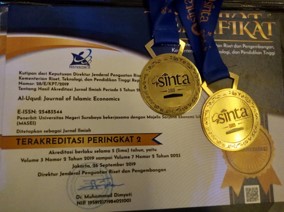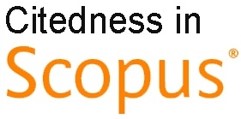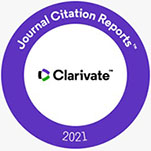An analysis of factors that affect earnings quality on Islamic commercial banks: The case at Indonesia and Malaysia
DOI:
https://doi.org/10.26740/aluqud.v7n1.p110-125Keywords:
Leverage, Liquidity, Profitability, Company sizeAbstract
This research aims to determine the impact of leverage, liquidity, and profitability; examine company size as a moderating element; and compare earnings quality at Indonesian and Malaysian Islamic commercial banks. This study's subjects were Indonesian and Malaysian Islamic commercial banks, with a sample size of ten Indonesian Islamic commercial banks and fourteen Malaysian Islamic commercial banks from 2016-2020. The regression approach was employed in this investigation. According to the findings of this study, leverage does not affect earnings quality; liquidity hurts earnings quality; profitability does not affect earnings quality; company size is unable to moderate the relationship of leverage to earnings quality; company size is unable to moderate the relationship of liquidity to earnings quality; company size is unable to moderate the relationship between profitability and earnings quality; Leverage, liquidity and profitability simultaneously have no effect on earnings quality at Indonesian Islamic commercial banks, but simultaneously affect Malaysian Islamic commercial banks; and there is no difference in earnings quality at Indonesian and Malaysian Islamic commercial bank.
References
Ghozali, I. (2018). Aplikasi Analisis Multivirate dengan Program IBM SPSS 25 (9th ed.). Semarang: Badan Penerbit Universitas Diponegoro.
Ghozali, M., Azmi, M. U., & Nugroho, W. (2019). Perkembangan Bank Syariah di Asia Tenggara: Sebuah kajian historis. Falah: Jurnal Ekonomi Syariah, 4(1), 44. https://doi.org/10.22219/jes.v4i1.8700
Gitman, L. J., & Zutter, C. J. (2015). Principles of Managerial Finance Fourteenth Edition. England: Pearson Education Limited .
Hakim, M. Z., & Naelufar, Y. (2020). Analysis of Profit Growth, Profitability, Capital Structure, Liquidity and Company Size of Profit Quality. Jurnal Akademi Akuntansi, 3(1), 12. https://doi.org/10.22219/jaa.v3i1.10348
Hidayat, W. W. (2018). Analisa Laporan Keuangan. Ponorogo: Uwais Inspirasi Indonesia. https://doi.org/10.1016/j.nrleng.2011.09.004
IFSB. (2020). Islamic Financial Services Industry Stability Report 2020. Kuala Lumpur: Bank Negara Malaysia
Jensen, C., & Meckling, H. (1976). Theory of the firm: Managerial Behaviour, Agency Costs and Ownership Structure. Journal of Financial Economics, 3(4): 305-360.
Mishra, S. B., & Alok, S. (2022). Handbook of Research Methodology. New Delhi: Educreation Publishing
R. Cooper, D., & S. Schindler, P. (2014). Business Research Methods. Twelfth Edition. New York: McGraw-Hill
Schipper, K., & Vincent, L. (2003). Earnings Quality. Accounting Horizons, 17(1), 97-110. https://doi.org/10.2308/acch.2003.17.s-1.97
Sekaran, U. (2011). Research Methods for Business: A Skill-Building Approach. New York: John Wiley & Sons, Inc
Subramanyam, K., & Wild, J. (2009). Financial Statement Analysis Tenth Edition. New York: McGraw-Hill
Syahrum, & Salim. (2012). Metodologi Penelitian Kuantitatif. Bandung: Cipustaka Media.
Ullah, B. (2020). Signaling Value of Quality Certification: Financing Under Asymmetric Information. Journal of Multinational Financial Management, 7(2), 55-69. https://doi.org/10.1016/j.mulfin.2020.100629
Wahlen, M, B. J., P, S., & Bradshaw, M. T. (2015). Financial Reporting, Financial Statement Analysis, and Valuation a Strategic Perspective (8th ed.). Boston: Cengage Learning.
Warianto, P., & Rusiti, C. (2014). Pengaruh Ukuran Perusahaan, Struktur Modal, Likuiditas dan Investment Opportunity Set (IOS) terhadap Kualitas Laba pada Perusahaan Manufaktur yang Terdaftar di BEI. Modus, 26(1), 19-32. https://doi.org/10.24002/modus.v26i1.575
Zulman, M., & Abbas, D. S. (2017). Pengaruh Ukuran Perusahaan, Struktur Modal, Likuiditas, Investment Opportunity Set (IOS), dan Profitabilitas terhadap Kualitas Laba. Jurnal Akuntansi Dan Keuangan, 3(3), 26-51.
Downloads
Published
How to Cite
Issue
Section
License
Copyright (c) 2023 The author(s)

This work is licensed under a Creative Commons Attribution 4.0 International License.
CC BY 4.0 Abstract views: 731
,
Abstract views: 731
, PDF Downloads: 678
PDF Downloads: 678








